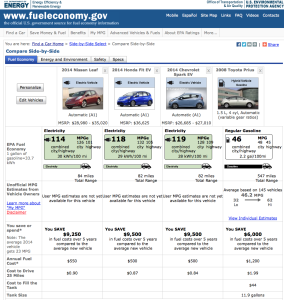 I WAS CRUISING AROUND MY PBS APP ON MY IPAD MINI and came across an interesting video series titled, “The Lexicon of Sustainability.” There are currently 21 short videos that run about 2 to 3 minutes each on a range of topics: fair trade versus direct trade, urban farming, drip irrigation, and so on. The emphasis is on healthier and safer food in America. I toured their website of the same name (link below) and was impressed by the scope and substance of the founders, Douglas and Laura Howard-Gayeton, and the network of people listed as thought leaders: Alice Waters, Vandana Shiva and Richard Heinberg, among many others. I’m hoping that some of their great ideas for “Pop-up Shows,” and “Street Art” may be incorporated into some of the public education and outreach we are planning this year as part of the Community Sustainability Commission’s work plan. There will be more about that in future articles.
I WAS CRUISING AROUND MY PBS APP ON MY IPAD MINI and came across an interesting video series titled, “The Lexicon of Sustainability.” There are currently 21 short videos that run about 2 to 3 minutes each on a range of topics: fair trade versus direct trade, urban farming, drip irrigation, and so on. The emphasis is on healthier and safer food in America. I toured their website of the same name (link below) and was impressed by the scope and substance of the founders, Douglas and Laura Howard-Gayeton, and the network of people listed as thought leaders: Alice Waters, Vandana Shiva and Richard Heinberg, among many others. I’m hoping that some of their great ideas for “Pop-up Shows,” and “Street Art” may be incorporated into some of the public education and outreach we are planning this year as part of the Community Sustainability Commission’s work plan. There will be more about that in future articles.
As in all odysseys via the Internet, I followed the thread from one of the thought leaders and wound up at a website called Home Power. The layout of their Web page is focused around solar electricity, solar water heating, wind power, microhydro power, home efficiency and vehicles. Microhydro power caught my attention because in 2013 the CSC recommended (and City Council approved) a grant for a study to be done on the feasibility of converting the energy in the flow of water through our water system to microhydro power. This conversion would be done through small turbines. Apparently, people living next to streams on their property that have sufficient flow are finding this process as another way of producing useable energy.
Earlier, as I worked my way around several articles on home efficiency, I pursued several links related to high-efficiency showerheads. For a couple of years I had been using a showerhead that has a 1.5-gallons-per-minute (GPM) flow. To put it mildly, it was a wimpy product that I wouldn’t recommend. Through the links provided on Home Power I located three companies that listed some interesting products: Bricor, Delta and Niagra. I settled on the Bricor Eco-Mi$er PC showerhead that uses less than 1 GPM. Niagra has some products that use as little as 0.5 GPM but I liked the specs on the Bricor.
I also went to Home Depot and purchased a medium mixing tub to use as a catchment in my shower. I had been using an old dishpan and bucket to catch some shower water but decided for $6 I could catch more water with this tub. The Bricor showerhead is really interesting. It makes an amazing rushing sound and has a very good shower flow.
 What’s happened to electric cars?
What’s happened to electric cars?
In checking out articles on electric cars on the Home Power site, I was led to a site sponsored by the U.S. Department of Energy, fueleconomy.gov. The first amazing revelation was the number of cars on the market today that are electric or hybrid gas and electric. The website allows a side-by-side comparison of cars by year, make and model. Then you can refine that comparison by looking at fuel economy, energy and environment, safety, and specifications.
• Years: You can choose a vehicle from as early as 1984, and up to 2015
• Makes: They range from Acura to Volvo, about 32 different makes
• Models: They are all listed for the makes available
What the comparisons really showed me was the common-sense dollar savings I could realize from going all electric. The 2014 Nissan Leaf is shown to cost around $30,000 (depending on how it’s configured and before applying the $7,500 Federal Tax Credit). It has an 84-mile range and the annual fuel cost is about $550. The Honda Fit EV and Chevrolet Volt and Spark EV have fuel costs that are about the same. Compared to an average, new, gas-only vehicle, the five-year saving in gas is about $9,500. So, if I kept an electric car for 10 years, the battery didn’t need replacement during that time, and I put my gas savings in the bank, I would be a lot of money ahead toward car replacement when the time came.
And I better not forget the federal tax credit of $7,500 as an additional incentive!
Under the link “New & Upcoming All-Electric Vehicles,” we see that BMW’s i3 should have a 186-mile range, Volkswagen’s eGolf a 93-mile range, and Tesla’s Model X, at $40,000, a 200-mile range.
At the moment, I must stick with my 2008 Toyota Prius and its 46 mpg — but when it’s time for a new car, I am definitely going electric!
Learn more
• Fueleconomy.gov
• HomePower.com
• Lexiconofsustainability.com
Constance Beutel is the chair of Benicia’s Community Sustainability Commission. She is a university professor and videographer and holds a doctorate from the University of San Francisco.






Leave a Reply